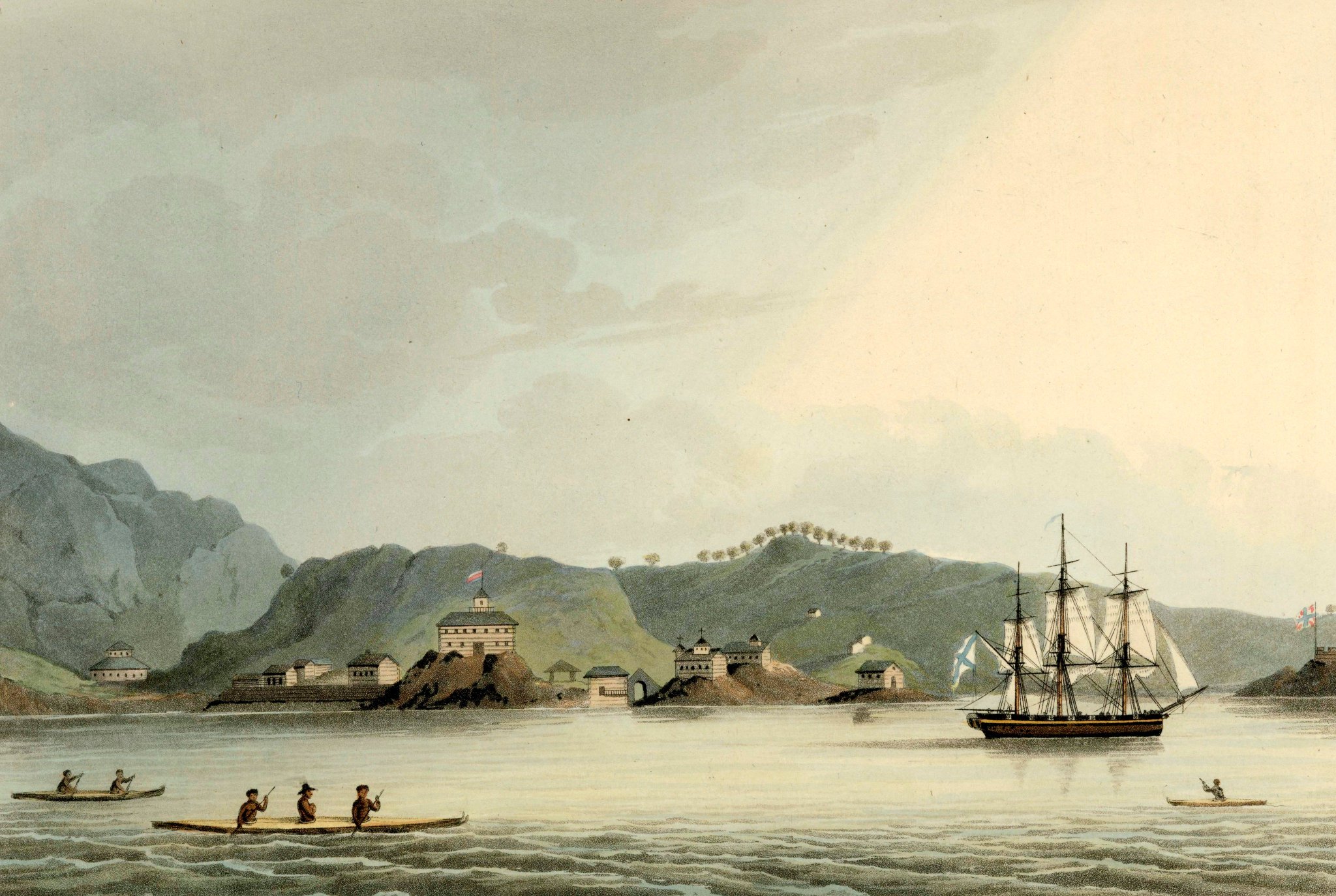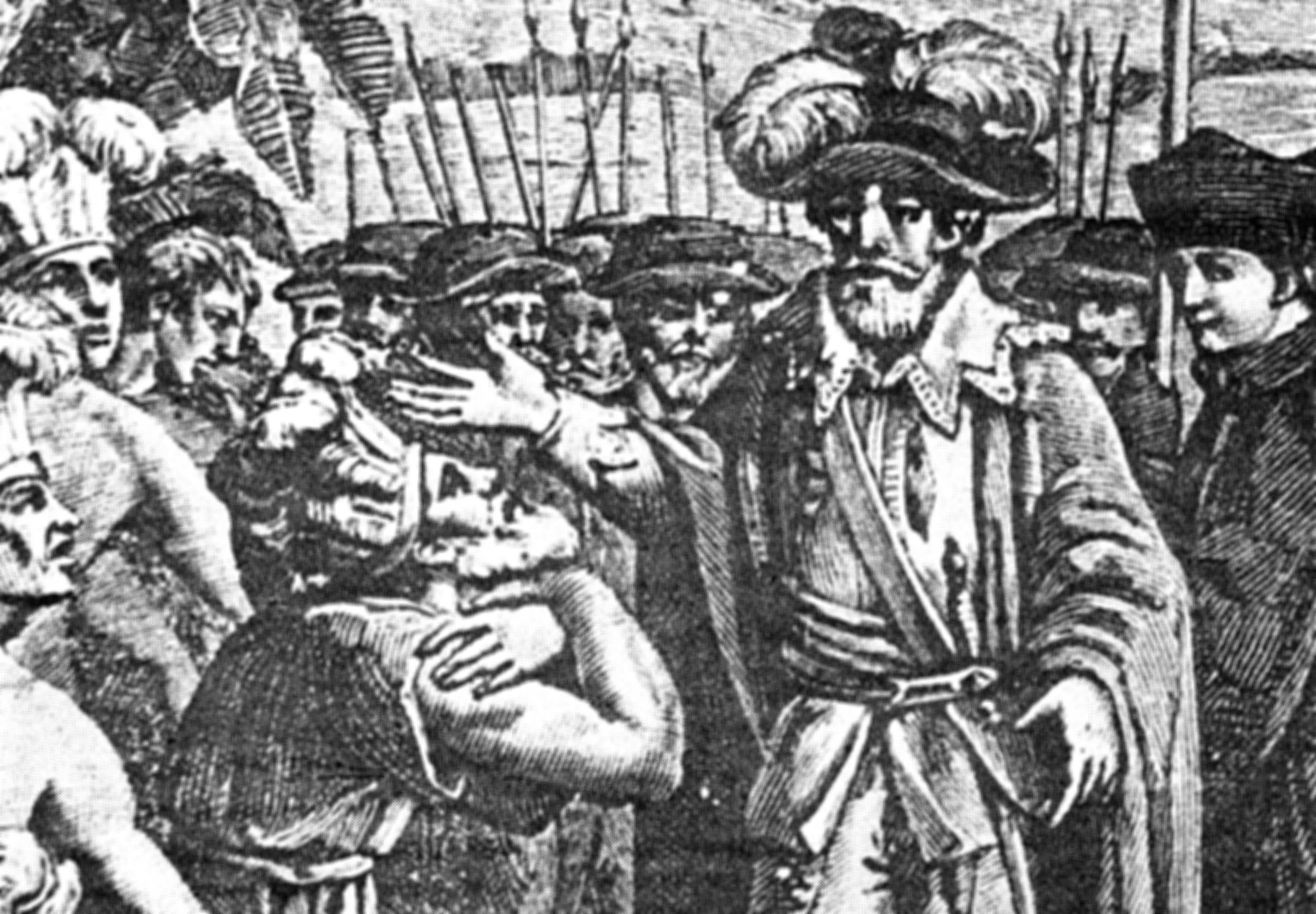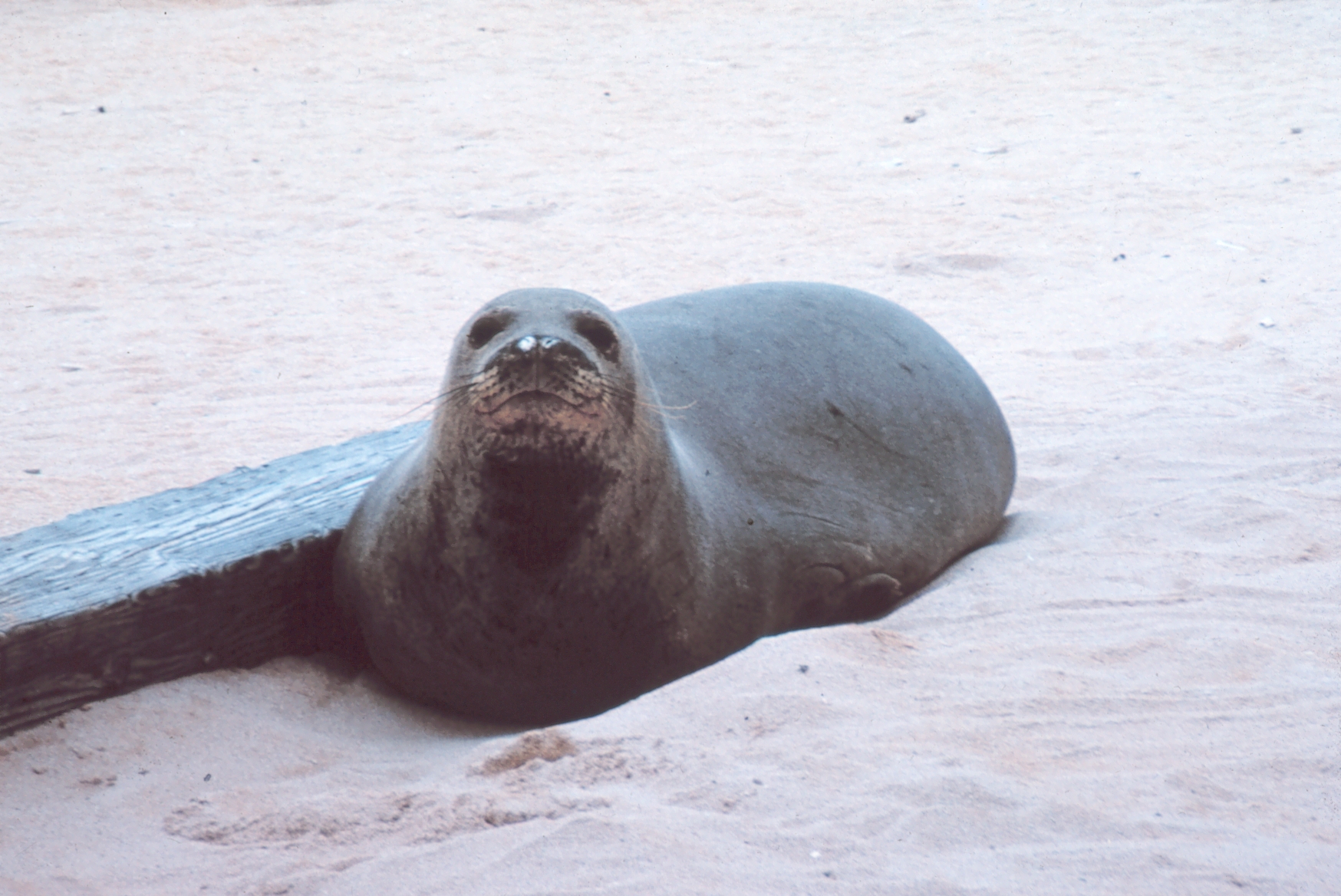|
Neva (1802 Russian Ship)
''Neva'' (russian: Нева) was the British merchant ship ''Thames'', launched in 1801, that the Russians bought in 1803, and renamed ''Neva''. She participated in two trips to the Far East, the first of which was the first Russian circumnavigation of the world. She was wrecked in January 1813. ''Thames'' ''Thames'' was a -long, three-masted sailing ship of 370 tons burthen, built in Britain in 1801. Russian career In 1802 Lieutenant Commander Yuri Feodorovich Lisyansky travelled to Britain where he bought two vessels, ''Thames'' and ''Leander'', on his own account. ''Thames'' and ''Leander'' left England for the Baltic in May 1803, docking at Kronstadt on 5 June. Czar Alexander I renamed ''Thames'' to ''Neva'', after the river, and ''Leander'' to '' Nadezhda'' ("Hope"). The two vessels sailed in 1803 on a voyage that would become the first Russian circumnavigation of the world. For the voyage ''Neva'' carried 14 cannon and a crew of 43 men under Lisyansky's command. The comm ... [...More Info...] [...Related Items...] OR: [Wikipedia] [Google] [Baidu] |
Kodiak, Alaska
Kodiak (Alutiiq: , russian: Кадьяк), formerly Paul's Harbor, is the main city and one of seven communities on Kodiak Island in Kodiak Island Borough, Alaska. All commercial transportation between the island's communities and the outside world goes through this city via ferryboat or airline. As of the 2020 census, the population of the city is 5,581, down from 6,130 in 2010. It is the tenth-largest city in Alaska. Originally inhabited by Alutiiq natives for over 7,000 years, the city was settled in the 18th century by the subjects of the Russian crown and became the capital of Russian Alaska. Russian harvesting of the area's sea otter pelts led to the near extinction of the animal in the following century and led to wars with and enslavement of the natives for over 150 years. The city has experienced two natural disasters in the last century: a volcanic ashfall from the 1912 eruption of Novarupta and a tsunami from the 1964 Alaska earthquake. After the Alaska Purchas ... [...More Info...] [...Related Items...] OR: [Wikipedia] [Google] [Baidu] |
Alexandr Baranov
Alexander Andreyevich Baranov (russian: Алекса́ндр Андре́евич Бара́нов; 1747 – 1819), sometimes spelled Aleksandr or Alexandr and Baranof, was a Russian trader and merchant, who worked for some time in Siberia. He was recruited by the Shelikhov-Golikov Company for trading in Russian America, beginning in 1790 with a five-year contract as manager of the outpost. He continued to serve past the end date of his contract. In 1799 Baranov was promoted, appointed by the recently chartered Russian-American Company as Chief Manager, effectively the first governor of Russian America. He served until 1818. This was the early colonial period of expansion of settlements. He founded Pavlovskaya (Kodiak) and later New Archangel (Sitka), Russian colonies that were bases of the company in present-day Alaska. In addition, he oversaw the expansion of the lucrative fur trade with Alaska Natives. He continued to support his Russian wife and children, who had moved fro ... [...More Info...] [...Related Items...] OR: [Wikipedia] [Google] [Baidu] |
Cape Horn
Cape Horn ( es, Cabo de Hornos, ) is the southernmost headland of the Tierra del Fuego archipelago of southern Chile, and is located on the small Hornos Island. Although not the most southerly point of South America (which are the Diego Ramírez Islands), Cape Horn marks the northern boundary of the Drake Passage and marks where the Atlantic and Pacific Oceans meet. Cape Horn was identified by mariners and first rounded in 1616 by the Dutchman Willem Schouten and Jacob Le Maire, who named it after the city of Hoorn in the Netherlands. For decades, Cape Horn was a major milestone on the clipper route, by which sailing ships carried trade around the world. The waters around Cape Horn are particularly hazardous, owing to strong winds, large waves, strong currents and icebergs. The need for boats and ships to round Cape Horn was greatly reduced by the opening of the Panama Canal in August 1914. Sailing around Cape Horn is still widely regarded as one of the major challenges in y ... [...More Info...] [...Related Items...] OR: [Wikipedia] [Google] [Baidu] |
Salvador, Bahia
Salvador (English: ''Savior'') is a Brazilian municipality and capital city of the state of Bahia. Situated in the Zona da Mata in the Northeast Region of Brazil, Salvador is recognized throughout the country and internationally for its cuisine, music and architecture. The African influence in many cultural aspects of the city makes it a center of Afro-Brazilian culture. As the first capital of Colonial Brazil, the city is one of the oldest in the Americas and one of the first planned cities in the world, having been established during the Renaissance period. Its foundation in 1549 by Tomé de Sousa took place on account of the implementation of the General Government of Brazil by the Portuguese Empire. Centralization as a capital, along with Portuguese colonization, were important factors in shaping the profile of the municipality, as were certain geographic characteristics. The construction of the city followed the uneven topography, initially with the formation of two leve ... [...More Info...] [...Related Items...] OR: [Wikipedia] [Google] [Baidu] |
Ludwig Von Hagemeister
Ludwig Karl August von Hagemeister (russian: Лео́нтий Андриа́нович Гагеме́йстер; Leontij Andrianovic Gagemejster;Baltic, Alix. ''The Baltic Connection in Russian America.'' Jahrbücher für Geschichte Osteuropas, Neue Folge 42, No. 3 (1994), pp. 321-339. ) was a Russian naval officer who held the rank of Captain of the 1st rank in the Imperial Russian Navy. He was a maritime explorer of Alaska and the Pacific Ocean, and served briefly in 1817-1818 as the second Chief Manager of the Russian-American Company. Career in the Navy Hagemeister was born to an ethnic Baltic German family in the Russian Empire. He began his service in the Russian naval forces in 1795 as a volunteer midshipman. Along with a group of fellow junior servicemen, he joined the British Royal Navy in 1802 on board .Pierce, Richard A. ''Russian America: A Biographical Dictionary.'' Kingston, Canada: The Limestone Press. 1990, pp. 185-187. In 1806 he was directed to take with ... [...More Info...] [...Related Items...] OR: [Wikipedia] [Google] [Baidu] |
Captain Lieutenant
Captain lieutenant or captain-lieutenant is a military rank, used in a number of navies worldwide and formerly in the British Army. Northern Europe Denmark, Norway and Finland The same rank is used in the navies of Denmark (), Norway () and Finland ( fi, kapteeniluutnantti; sv, Kaptenlöjtnant). In Denmark and Norway, the higher rank is Ship-of-the-line captain ( da, Orlogskaptajn; no, Orlogskaptein), and the lower rank is First lieutenant () in Denmark and Lieutenant () in Norway. Latvia, Lithuanian and Estonia In the Estonian Navy the similarly sounding rank of ''kaptenleitnant'' is an officer rank classified as NATO OF-4, i.e. equal to commander in the Royal Navy and United States Navy. As the commander of the Estonian Navy is a captain, this is the de facto second highest rank in the Estonian Navy. Sweden A captain lieutenant (''Kaptenlöjtnant'') was in Sweden an officer standing between captain and lieutenant, who commanded one of the companies, which actually had th ... [...More Info...] [...Related Items...] OR: [Wikipedia] [Google] [Baidu] |
Nankeen
Nankeen (also called Nankeen cloth) is a kind of pale yellowish cloth originally made in Nanking (modern Nanjing), China from a yellow variety of cotton, but subsequently manufactured from ordinary cotton that is then dyed.''Oxford English Dictionary'' The term blue nankeen describes hand-printed fabric of artistic refinement and primitive simplicity, which originated on the Silk Road over three thousand years ago. Hand-carved stencils, originally made from wood but now from heavy paper, are prepared and a mix of soybean flour and slaked lime is applied through the openings of the stencil onto the 100% cotton fabric. When dry, the fabric is then dipped numerous times into the large tubs containing the indigo dye. After the desired color is achieved and the fabric has dried, the paste is scraped off, revealing the white patterns on the blue cloth. The fabric is then washed, dried, and ironed before fabrication. Derived uses Nankeen also refers to: *Trousers made of nankeen ... [...More Info...] [...Related Items...] OR: [Wikipedia] [Google] [Baidu] |
Hawaiian Monk Seal
The Hawaiian monk seal (''Neomonachus schauinslandi'') is an endangered species of earless seal in the family Phocidae that is endemic to the Hawaiian Islands. The Hawaiian monk seal is one of two extant monk seal species; the other is the Mediterranean monk seal. A third species, the Caribbean monk seal, is extinct. The Hawaiian monk seal is the only seal native to Hawaii, and, along with the Hawaiian hoary bat, is one of only two mammals endemic to the islands. ''N. schauinslandi'' is a conservation reliant endangered species. The small population of about 1,400 individuals is threatened by human encroachment, very low levels of genetic variation, entanglement in fishing nets, marine debris, disease, and past commercial hunting for skins. There are many methods of conservation biology when it comes to endangered species; translocation, captive care, habitat cleanup, and educating the public about the Hawaiian monk seal are some of the methods that can be employed. Etymo ... [...More Info...] [...Related Items...] OR: [Wikipedia] [Google] [Baidu] |
Lisianski Island
Lisianski Island ( Hawaiian: ''Papa‘āpoho'') is one of the Northwestern Hawaiian Islands, with a land area of and a maximum elevation of above sea level. It is a low, flat sand and coral island about northwest of Honolulu, Hawaii. The island is surrounded by reefs and shoals, including the extensive Neva Shoals. Access to the island is possible only by helicopter or by boat via a narrow sandy inlet on the southeastern side of the island. Administration Politically, Lisianski Island is part of the City and County of HonoluluBryan, p. 10. in the State of Hawaii. However, as part of the Hawaiian Islands National Wildlife Refuge, it is administered by the United States Fish and Wildlife Service. It has no resident human population. Geology and topography Lisianski Island is made of limestone that caps the submerged summit of an extinct shield volcano that was active about 20 million years ago. Lisianski Island is undergoing the slow process of erosion, and features a dep ... [...More Info...] [...Related Items...] OR: [Wikipedia] [Google] [Baidu] |
Shamanism
Shamanism is a religious practice that involves a practitioner (shaman) interacting with what they believe to be a Spirit world (Spiritualism), spirit world through Altered state of consciousness, altered states of consciousness, such as trance. The goal of this is usually to direct Non-physical entity, spirits or Energy (esotericism), spiritual energies into the physical world for the purpose of healing, divination, or to aid human beings in some other way. Beliefs and practices categorized as "shamanic" have attracted the interest of scholars from a variety of disciplines, including anthropologists, archeologists, historians, religious studies scholars, philosophers and psychologists. Hundreds of books and Academic publishing#Scholarly paper, academic papers on the subject have been produced, with a peer-reviewed academic journal being devoted to the study of shamanism. In the 20th century, non-Indigenous Peoples, Indigenous Westerners involved in countercultural movements, ... [...More Info...] [...Related Items...] OR: [Wikipedia] [Google] [Baidu] |
Sailing Ship
A sailing ship is a sea-going vessel that uses sails mounted on masts to harness the power of wind and propel the vessel. There is a variety of sail plans that propel sailing ships, employing square-rigged or fore-and-aft sails. Some ships carry square sails on each mast—the brig and full-rigged ship, said to be "ship-rigged" when there are three or more masts. Others carry only fore-and-aft sails on each mast, for instance some schooners. Still others employ a combination of square and fore-and-aft sails, including the barque, barquentine, and brigantine. Early sailing ships were used for river and coastal waters in Ancient Egypt and the Mediterranean. The Austronesian peoples developed maritime technologies that included the fore-and-aft crab-claw sail and with catamaran and outrigger hull configurations, which enabled the Austronesian expansion into the islands of the Indo-Pacific. This expansion originated in Taiwan BC and propagated through Island Southeast Asia ... [...More Info...] [...Related Items...] OR: [Wikipedia] [Google] [Baidu] |
Sitka Sound
Sitka Sound is a body of water near the city of Sitka, Alaska. It is bordered by Baranof Island to the south and the northeast, by Kruzof Island to the northwest and by the Pacific Ocean to the southwest. During the early 19th century it was a major locus of the maritime fur trade. Naming history Sitka Sound was named Ensenada de Susto by Juan de la Bodega on 15 August 1775. It was later named Norfolk Sound by James Cook James Cook (7 November 1728 Old Style date: 27 October – 14 February 1779) was a British explorer, navigator, cartographer, and captain in the British Royal Navy, famous for his three voyages between 1768 and 1779 in the Pacific Ocean an .... In 1801, Fleurieu published a map naming it Baie Tchinkîtâné in an attempt to use Tlingit toponyms. References Bodies of water of Sitka, Alaska Sounds of Alaska {{SitkaAK-geo-stub es:Nutka Sound ... [...More Info...] [...Related Items...] OR: [Wikipedia] [Google] [Baidu] |






